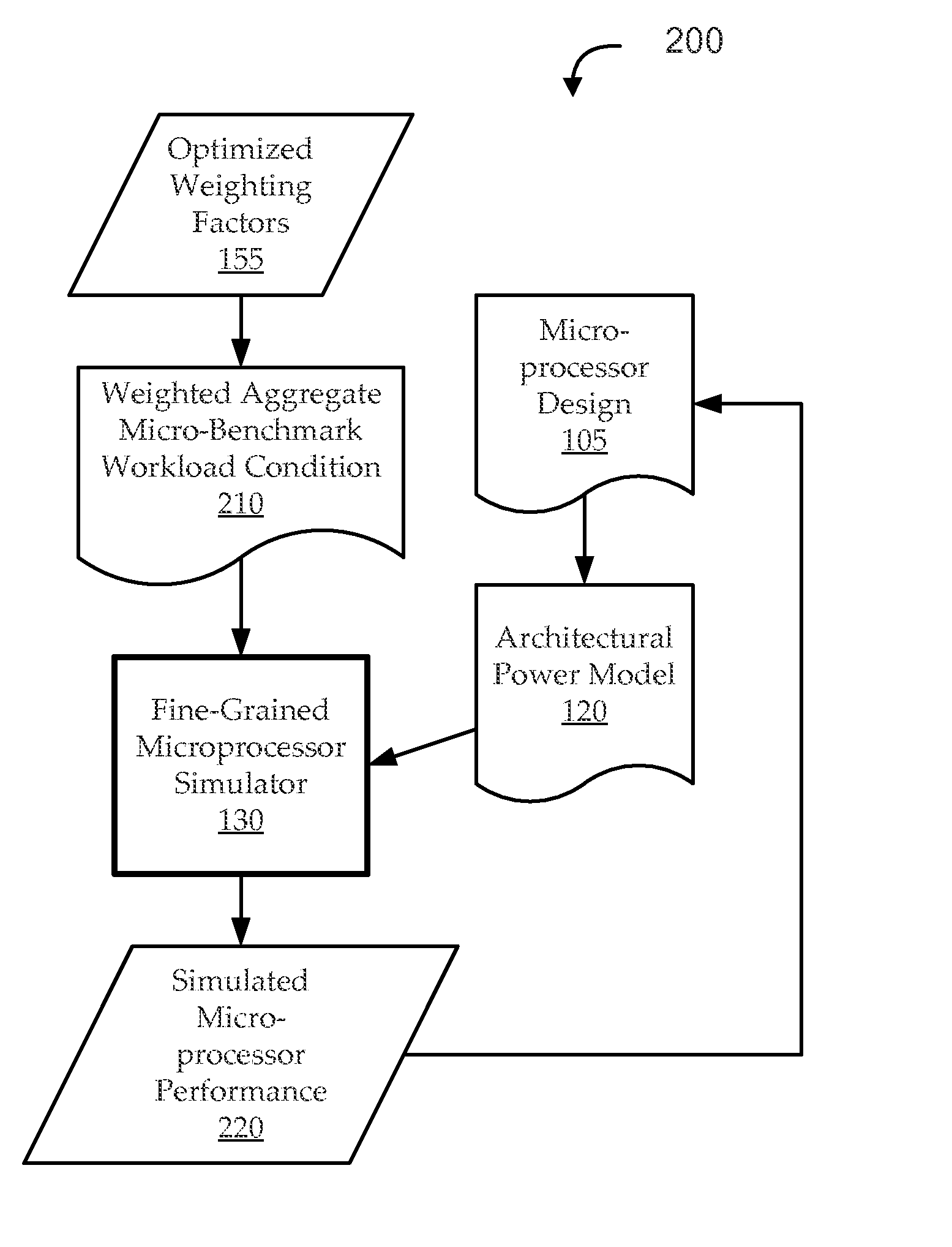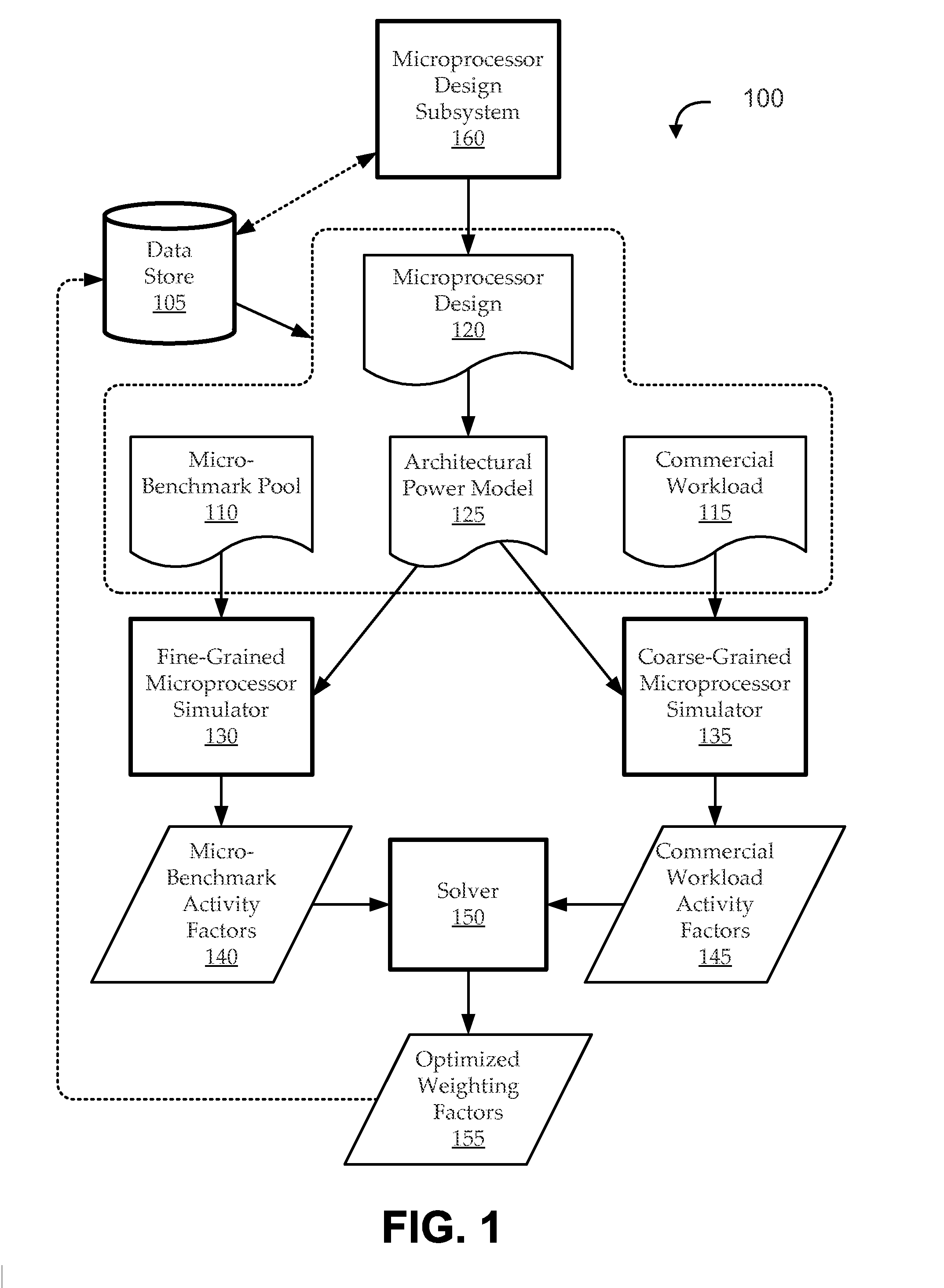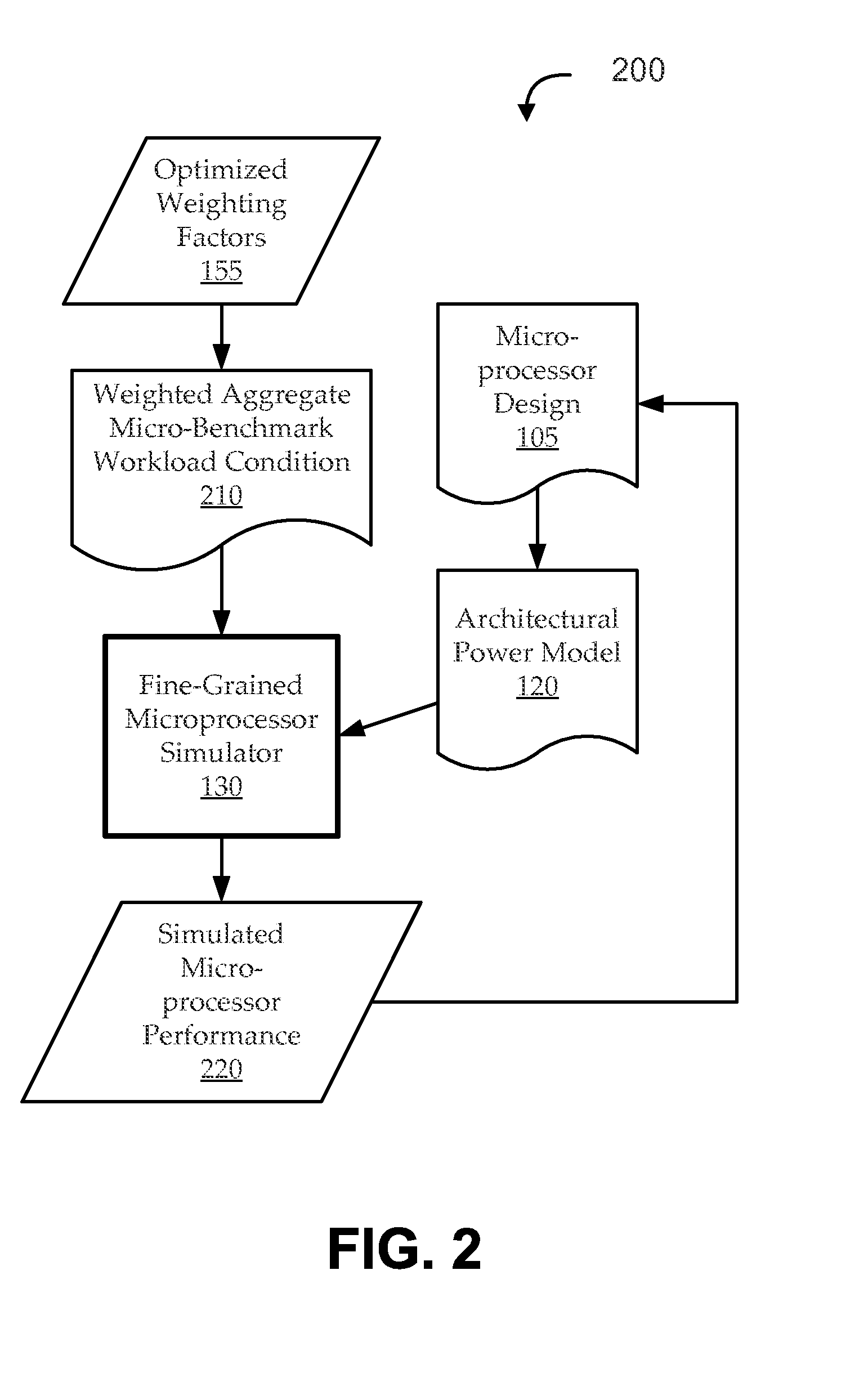Micro-benchmark analysis optimization for microprocessor designs
a microprocessor and design technology, applied in the field of microprocessor analysis, can solve the problems of commercial workloads, rtl simulations can be impractical for simulating long-running, commercial workloads, and workload conditions provided by micro-benchmarks that are often appreciably different from actual workload conditions dynamic or average behavior
- Summary
- Abstract
- Description
- Claims
- Application Information
AI Technical Summary
Benefits of technology
Problems solved by technology
Method used
Image
Examples
Embodiment Construction
[0014]In the following description, numerous specific details are set forth to provide a thorough understanding of the present invention. However, one having ordinary skill in the art should recognize that the invention may be practiced without these specific details. In some instances, circuits, structures, and techniques have not been shown in detail to avoid obscuring the present invention.
[0015]Turning first to FIG. 1, a microprocessor design optimization system 100 is shown for use with various embodiments. The microprocessor design optimization system 100 includes a fine-grained microprocessor simulator 130, a coarse-grained microprocessor simulator 135, and a solver 155, all in communication with a data store 105. Some embodiments are in communication with a microprocessor design system 160.
[0016]For the sake of illustration, and as will be described more fully below, designers use a microprocessor design system 160 to generate a microprocessor design 120, from which an archi...
PUM
 Login to View More
Login to View More Abstract
Description
Claims
Application Information
 Login to View More
Login to View More - R&D
- Intellectual Property
- Life Sciences
- Materials
- Tech Scout
- Unparalleled Data Quality
- Higher Quality Content
- 60% Fewer Hallucinations
Browse by: Latest US Patents, China's latest patents, Technical Efficacy Thesaurus, Application Domain, Technology Topic, Popular Technical Reports.
© 2025 PatSnap. All rights reserved.Legal|Privacy policy|Modern Slavery Act Transparency Statement|Sitemap|About US| Contact US: help@patsnap.com



